Choosing the Best Bench Press Grip Width for You
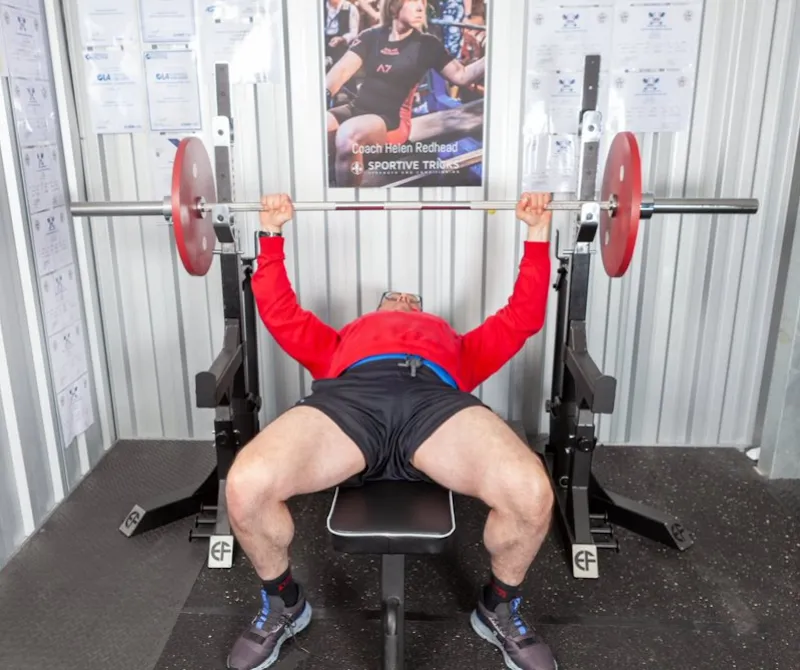
""
What's In This Article
- Key Highlights
- Introduction
- Bench Press Grip Widths
- The Science Behind Grip Width and Muscle Activation
- Measuring Your Biacromial Distance for Optimal Grip Width
- Technique Tips
- Training Strategies
- Common Mistakes
- Conclusion
- Frequently Asked Questions
Key Highlights
- The wide grip bench is generally strongest, with an average strength difference of 5-6%.
- The close grip bench emphasizes tricep activation more than the wide technique, which focuses more on the chest and shoulder muscles.
- The ideal width for maximizing chest development is about 1.5 times your bi-acromial distance.
- Being wider does not necessarily activate more pectoral muscles and may increase the risk of shoulder injury.
- Finding a width that feels strong, stable, and comfortable for you is important.
- Experiment to find the one that allows you to lift the most weight and minimize the risk of injury.
Introduction
The bench press is a staple exercise in strength training and is often considered the ultimate test of upper body strength. It is a compound movement that primarily targets the chest, shoulders, and triceps muscles. However, the width of your grip is one key factor that can significantly impact your bench press performance and triceps activity. This is especially important to keep in mind when performing the popular and beloved exercise, the barbell bench press or "benching."
Choosing the right bench press grip width is essential for optimizing your performance and minimizing the risk of injury. Three main widths are commonly used in the bench press: narrow, medium, and wide variations. Each width has pros and cons, and finding the one that works best for you can significantly affect your bench press results.
In this blog, we will explore the different bench press widths, their effects on muscle activation and joint health, and how to determine the optimal width for your body. We will also provide technique tips for each width and training strategy to incorporate variations into your workout routine. So, let's dive in and learn how to choose the best bench press width for you.
Bench Press Grip Widths
Before we look at the details, let's first understand the width of the bench press grip. It refers to the distance between your hands on the barbell during the exercise, measured from the inside edge of your index finger on both sides. There are three main variations: narrow, medium, and wide, with the moderate grip falling in between the narrow and medium widths. The close grip bench press, with your hands placed closer together than in the standard grip, is an excellent choice for targeting the triceps muscles. The reverse grip, with your pinky fingers placed on the rungs, is also an option for those looking to target different muscles in the chest and arms. Experiment with different grip widths to find what feels most comfortable and allows you to lift the most weight with proper form. The wide grip is the most beneficial for targeting the chest muscles and achieving the top position in the lift.
The Importance of Grip Width in Powerlifting
In powerlifting, width plays a crucial role in bench press performance. It can affect the mechanics of the lift, muscle activation, and overall strength output.
Grip width becomes even more critical in raw lifting, where lifters do not use supportive gear like bench press shirts. Raw lifters rely solely on their own strength and technique to lift the weight, making the optimal technique essential for maximizing performance. The wrong technique, such as using a geared lift style, can lead to decreased power output, inefficient movement patterns, and increased risk of injury, highlighting the importance of finding the right width for a raw lift.
Therefore, powerlifters need to find the ideal width to generate maximum force, maintain proper form, and minimize the risk of injury. This often involves experimenting with different widths and techniques and assessing their impact on performance and comfort. By finding the optimal width, powerlifters can optimize their bench press performance and maximize their raw press strength, lifting as much weight as possible.
Narrow vs. Medium vs. Wide: Pros and Cons
In the bench press, grip width is a matter of personal preference, but it's important to understand the pros and cons of different widths.
Narrow :
Pros:
- Shorter range of motion, allowing you to lift heavier weights
- Increased tricep activation
- Provides a stronger lockout position
Cons:
- Decreased pectoral muscle activation
- May cause elbow discomfort or strain
- Limited chest development
Medium :
Pros:
- Balanced activation of pectoral muscles, triceps, and shoulders
- Allows for a wider range of motion compared to a narrow grip
- Offers a good compromise between strength and muscle development
Cons:
- Not as effective for targeting specific muscle groups
- May require more stabilization due to increased shoulder involvement
- Less mechanical advantage compared to a wide grip
Wide:
Pros:
- Increased pectoral muscle activation
- Greater chest development
- Provides a longer range of motion, targeting more muscle fibers
Cons:
- Decreased tricep activation
- Increased stress on the shoulder joint
- May limit the amount of weight lifted
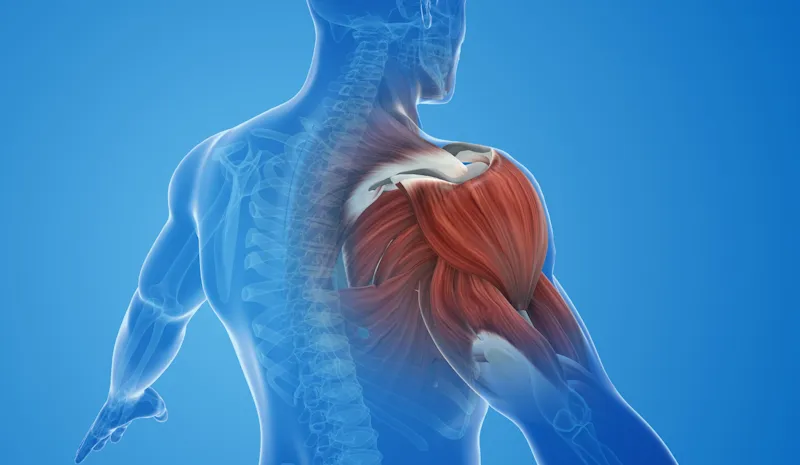
The Science Behind Grip Width and Muscle Activation
Understanding the science behind grip width and muscle activation can help you make informed decisions about your bench press technique. Electromyography (EMG) analysis has shown that width affects muscle activation patterns, particularly in the pectoralis muscles. A wider technique leads to greater pectoralis muscle recruitment, while a narrower width shifts the focus more towards the triceps. By considering EMG activity during different widths, along with the horizontal forces around the sticking region, we can gather more detailed information about how these muscles generate forces in the sticking region and how to manipulate it by choosing a width that supports individual strength and weaknesses. Check out some of the studies by Calatayud et al. on the effect of grip width on muscle activation during bench press, specifically focusing on the kinematics and kinetics of the barbell. This information can be valuable when targeting specific muscle groups or addressing imbalances.
How Grip Width Affects Pectoral, Shoulder, and Tricep Engagement
The width you choose in the bench press directly influences the engagement of your pectoral muscles, shoulders, and triceps. The wider the width, the more you activate your pectoral muscles, increasing chest development. However, a wide width reduces tricep engagement, potentially limiting your lockout strength. On the other hand, a narrow width places greater emphasis on the triceps, allowing for stronger lockout but sacrificing some pectoral muscle activation. A medium width balances the two, engaging the pectoral muscles and triceps to a moderate extent.
The Impact of Grip Width on Joint Health and Injury Prevention
Grip Width in the bench press can significantly impact joint health and injury prevention. Choosing incorrectly can place excessive stress on your shoulder joints, increasing the risk of shoulder pain and injury. Going wide, for example, can lead to greater shoulder joint abduction, putting it in an "at-risk" position for injury. Conversely, a narrow width can result in excessive strain on the elbow joint and upper arm. Finding the right grip width that allows for proper joint alignment and minimizes the risk of overloading specific joints, such as the nipples, is a good idea for optimal joint health and injury prevention.
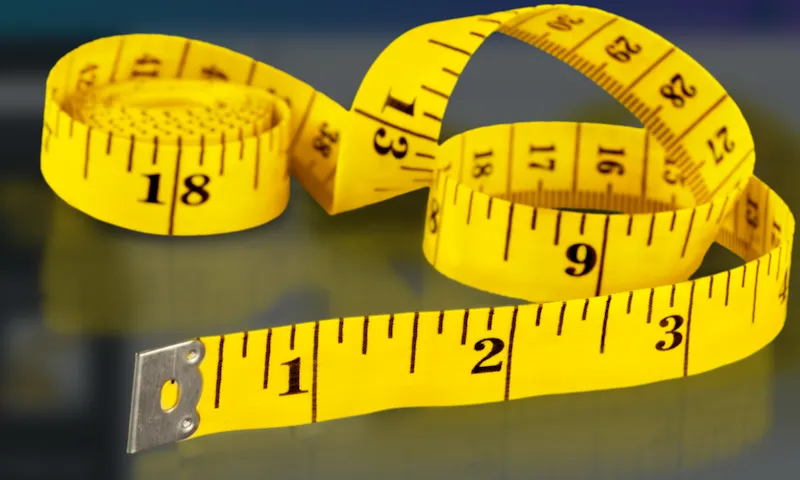
Measuring Your Biacromial Distance for Optimal Grip Width
To determine your optimal grip in the bench press, measure your bi-acromial distance or the distance between the outer edge of both acromial processes. This measurement, also known as the times bi-acromial width, can be used as a reference point to find your ideal width. To measure your bi-acromial distance, simply use a measuring tape to measure the distance between the two points.
Step-by-Step Guide to Finding Your Biacromial Distance
Finding your bi-acromial distance is a simple process that involves measuring the distance between the outside edges of both acromial processes. To measure your bi-acromial distance, follow these steps:
- Stand in an upright position with your shoulders relaxed.
- Locate the outer edge of both acromial processes, the bony points on the top of your shoulders.
- Use a measuring tape to measure the distance between the two points.
- Take note of this measurement, as it will determine your optimal grip width in the bench press.
Applying Your Measurements
You can apply your bi-acromial distance measurement to find your ideal grip in the bench press. The general rule of thumb is to use a grip approximately 1.5 times your bi-acromial width, or approximately 38 cm. For example, if your bi-acromial distance is 17 inches, this would be around 25.5 inches or 64.8 cm. This measurement is taken from the inside edge of your index finger on both sides, giving you a reference point for hand placement on the bar. To ensure a secure grip, it may also be helpful to apply some chalk to your hands before gripping the bar.
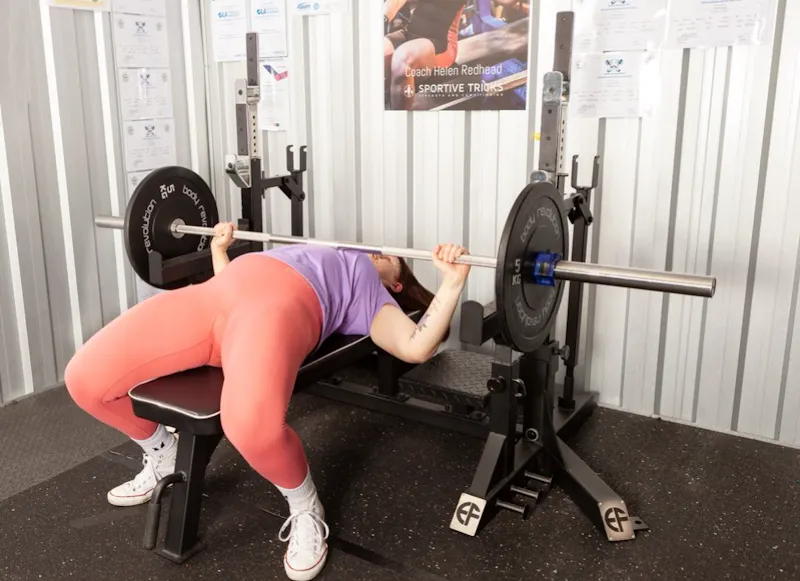
Technique Tips
Proper technique is crucial for maximizing your bench press performance.
Narrow:
- Keep your elbows close to your sides to emphasize tricep engagement.
- Focus on maintaining a strong upper back and tight core to support the weight.
- Control the bar throughout the entire range of motion to prevent excessive strain on the elbows.
Wide :
- Keep your shoulder blades retracted and down to enhance stability and shoulder joint alignment.
- Engage your pectoral muscles by actively squeezing your chest throughout the movement.
- Maintain a controlled descent and explosive concentric phase to optimize muscle activation.
Medium:
- Aim for a grip width for a comfortable range of motion and balanced muscle engagement.
- Focus on maintaining proper form and technique, including a strong arch, tight upper back, and controlled movement..
Mastering the Narrow Grip Bench Press
The narrow grip bench press is a technique that emphasizes tricep engagement and minimizes chest activation.
- Position your hands closer together on the bar, with your elbows tucked close to your sides.
- Maintain a strong arch in your lower back and squeeze your shoulder blades together to enhance stability.
- Keep your elbows at a 45-degree angle from your body to maximize tricep activation.
- Control the bar's descent and drive it explosively back to the starting position.
- Focus on maintaining proper elbow position throughout the movement to avoid excessive joint strain.
Executing the Perfect Medium Grip Bench Press
The medium grip bench press is a versatile technique that balances tricep and chest activation.
- Position your hands comfortably apart on the bar, around 1.4 times your bi-acromial width.
- Maintain a slight arch in your lower back and engage your core for stability.
- Focus on keeping the bar in a straight line as you lower it to your chest and press it back up.
- Keep your elbows at a 45-degree angle from your body to effectively engage your chest and triceps.
- Control the movement throughout the entire range of motion, avoiding excessive bouncing or jerking.
Tips for a Safe and Effective Wide Grip Bench Press
The wide grip bench press is a technique that emphasizes chest activation and places greater stress on the shoulder joints.
- Position your hands wider apart on the bar, around 1.7 times your biacromial width.
- Focus on maintaining good shoulder mobility and flexibility to ensure proper range of motion.
- Keep your shoulder blades retracted and down throughout the movement to enhance stability.
- Engage your chest muscles by actively squeezing them throughout the exercise.
- Avoid excessive flaring of the elbows, which can place excessive stress on the shoulder joints.
- Find your maximum width that allows for proper form and technique without compromising shoulder health.

Training Strategies
Incorporating different bench press variations into your training can help you target specific muscle groups and avoid plateaus. By varying your grips, you can stimulate different muscle fibers and challenge your body in new ways. Some training strategies for bench press variations include:
- Incorporating different variations into your workout routine, such as narrow, medium, and wide grips.
- Adjust your training plan based on your preferences and goals.
- Using variations as a way to overcome plateaus in bench press performance.
- Experiment with different techniques to find what works best for you.
Incorporating Different Grips into Your Workout Routine
By varying your grips, you can stimulate different muscle fibers and challenge your body in new ways.
- Include narrow, medium, and wide variations in your bench press workouts.
- Rotate between variations from session to session or within the same session to target different muscle groups.
- Adjust based on your goals and the specific muscle groups you want to emphasize.
- Use variations to overcome plateaus and keep your training fresh and challenging..
Adjusting Your Training Plan Based on Grip Width Preference
Your grip width preference in the bench press can significantly impact your performance and results. You can maximise muscle activation and progress by adjusting your training plan based on your preference. Here are some tips for adjusting your training plan:
- Focus on the variation that allows you to lift the most weight and maintain proper form and technique.
- Incorporate width variations into your training to target different muscle groups and stimulate muscle growth.
- Prioritize exercises that align with your preference to optimize muscle activation.
- Listen to your body and adjust your training plan accordingly if you experience any discomfort or pain.
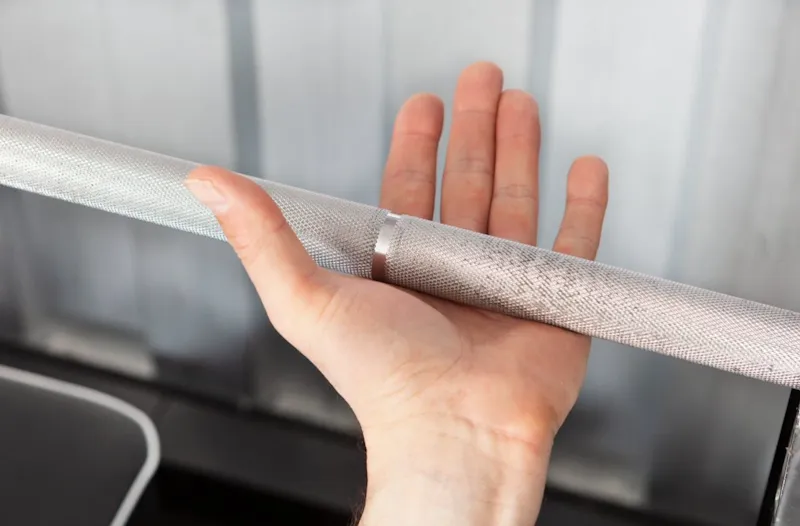
Common Mistakes
When it comes to bench press grip, there are some common mistakes that lifters often make. You can optimize your grip and enhance your bench press performance by avoiding these mistakes. Some common mistakes to avoid include:
- Overlooking the importance of wrist position in the bench press.
- Ignoring shoulder health and mobility when selecting a grip.
- Neglecting proper form and technique for each .
- Failing to adapt your training plan based on your preference.
Overlooking the Importance of Wrist Position
The position of your wrists in the bench press can have a significant impact on your performance and injury risk. Many lifters overlook the importance of wrist position and fail to ensure proper alignment during the movement. Incorrect wrist position can lead to discomfort, pain, and even injury. To achieve the proper wrist position in the bench press, focus on the following external rotation of the shoulder and the glenohumeral joint:
- Keep your wrists straight and in line with your forearms throughout the movement.
- Avoid excessive bending or flexing of the wrists, which can place excessive stress on the joints.
- Maintain a strong grip on the bar, using your fingers and not relying on your wrists to support the weight.
By prioritizing proper wrist position, you can enhance your bench press performance and mitigate the risk of wrist-related injuries.
Ignoring Shoulder Health and Mobility
Shoulder health and mobility are crucial factors to consider when selecting a grip width in the bench press. Ignoring these factors can lead to decreased performance and increased risk of injury. To ensure optimal shoulder health and mobility, focus on the following:
- Prioritize exercises and stretches that target the shoulder joint, such as shoulder dislocations and rotator cuff exercises.
- Incorporate regular mobility work into your training routine, including exercises that improve thoracic spine mobility and scapular stability.
- Listen to your body and address any shoulder discomfort or pain immediately.
- Consider seeking guidance from a qualified professional, such as a physical therapist or strength coach, to address any shoulder issues.
By prioritizing shoulder health and mobility, you can minimize the risk of injury and optimize your bench press performance.
Conclusion
In conclusion, selecting the right bench press grip is crucial for optimizing your performance and minimizing the risk of injuries. Understanding the science behind different grips and how they affect muscle activation is key to enhancing your bench press technique. By measuring your bi-acromial distance and applying it to find your ideal grip, you can personalize your training to suit your body mechanics. Remember to strategically incorporate various grips into your workout routine and avoid common mistakes like neglecting wrist position and shoulder health. With the right grip and technique, you can effectively maximize your chest development and overcome plateaus in your bench press performance.
Frequently Asked Questions
What Is the Best Grip Width for Maximizing Chest Development?
A wider grip is typically the best grip width for maximizing chest development in the bench press. A wider grip activates the pectoral muscles more effectively, increasing chest development. However, finding a variation that allows for proper form and technique is essential while minimizing the risk of injury.
How Often Should I Change My Bench Press Grip Width?
The frequency of changing your bench press grip width depends on your training goals and individual needs. Some lifters may benefit from periodically changing their width to target different muscle groups and stimulate muscle growth. However, it's important to allow for proper training adaptation and gradually introduce new grip widths to minimize the risk of injury.
Can Grip Width Variation Help Overcome Plateaus in Bench Press Performance?
Variation can be a useful tool for overcoming plateaus in bench press performance. By changing your grip width, you can target different muscle groups and introduce a new stimulus to your muscles. This variation can increase strength and muscle gains, helping you break through performance plateaus.
